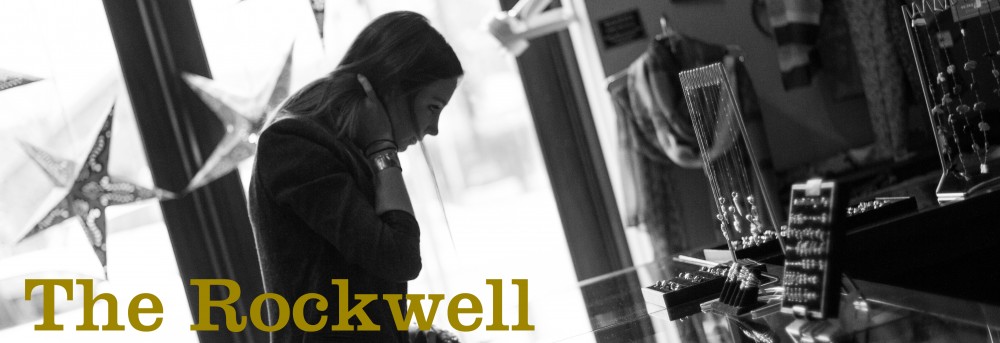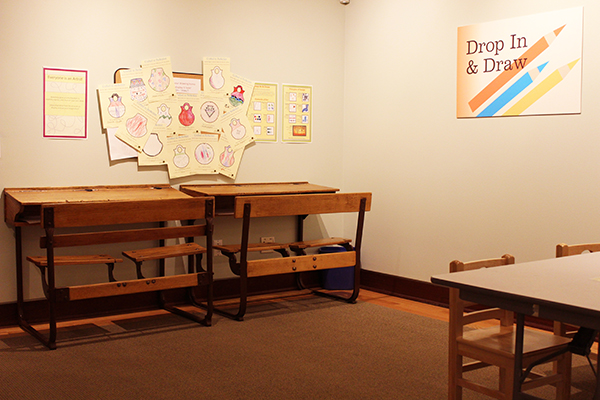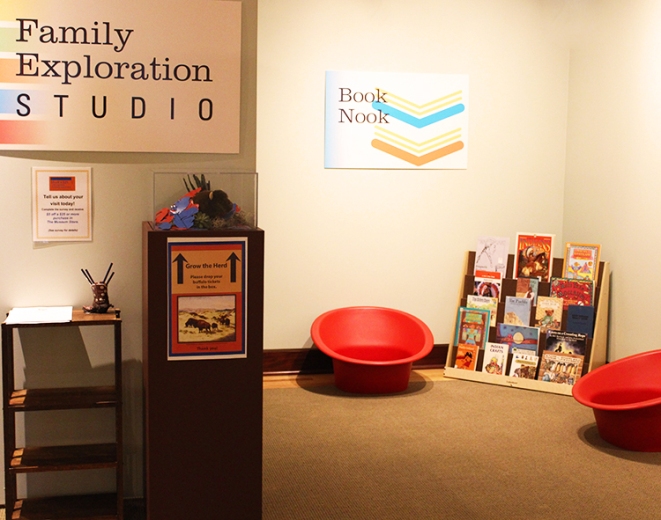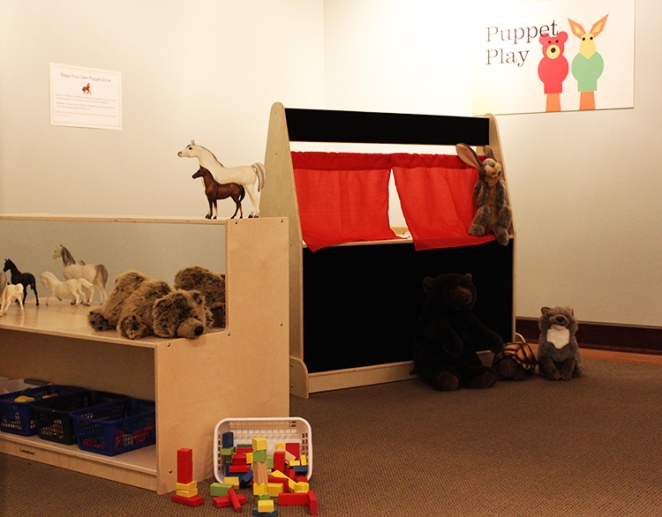@LuckyMamaJ, blogger @WSKG, visited The Rockwell with her 3-year old son. Read about their experience!
http://ow.ly/zzPvR
@LuckyMamaJ, blogger @WSKG, visited The Rockwell with her 3-year old son. Read about their experience!
http://ow.ly/zzPvR
@LuckyMamaJ, blogger @WSKG, visited The Rockwell with her 3-year old son. Read about their experience!
http://ow.ly/zzPvR
Last night’s rain didn’t stop us from
Last night’s rain didn’t stop us from having a blast at Music & Margaritas! RSVP for August! http://ow.ly/zysAp
Now Open at The Rockwell – Family Exploration Studio
A family visit to The Rockwell Museum now includes drop-in play in the new Family Exploration Studio. In this interactive space, visitors of all ages can drop-in and draw, perform a puppet show, build with blocks, match the tiles in a pottery demo, and read together in the book nook. As always, kids and teens are free. The Family Studio is open every day, 9 a.m. – 5 p.m. and will have extended summer hours beginning Memorial Day (9 a.m. – 8 p.m.). The five centers throughout The Studio are designed to encourage play and creative dialogue while supporting the physical, emotional, and cognitive development of children. Families are encouraged to drop-in any time; no reservations are required.
Did you miss our latest lecture by David Higgins?
Did you miss our latest lecture by David Higgins?
In the Footsteps of Lewis & Clark: The Journey of David Higgins….
Check out the full recording here: http://ow.ly/tHSh1 http://ow.ly/i/4CN6o
Sherman Alexie, March 4th at 7:30 p.m.
The Rockwell Museum is thrilled to announce that the Sherman Alexie program has been rescheduled and will take place on Tuesday, March 4, 2014 at 7:30 p.m. at The Corning Museum of Glass auditorium. Purchased tickets for the original program will be honored for the new date.
The event is currently sold out, however it is likely that seats may become available the evening of the event. Available seats will be sold at a first come, first served basis at the ticketing desk the evening of the event. For questions, please call The Rockwell Museum at 607.937.5386.
Frowning Cliff, Watkins Glen New York
The Rockwell Museum is proud to present a beautiful painting from the Arnot Art Museum in Elmira, New York. This is a great opportunity to see an iconic painting of an area in Watkins Glen State known as Frowning Cliff. Now that the Park is closed for the season, come see what you are missing. Below I’ve provided some information and pictures related to the artist, the painting, and the park! ~James Peck, Curator of Collections
The Artist
James Hope was born in Scotland in 1818. At age 13, following the death of his mother, he and his father moved to Canada. A few years later, Hope moved to Fairhaven, Vermont, to begin a five-year apprenticeship to a wagon-maker. After his apprenticeship, Hope studied for a year at Castleton Seminary, and soon after took up portraiture. By 1843, Hope was established as a professional artist in nearby West Rutland, VT. Hope settled in Rutland, built a house, taught painting and drawing at the Castleton Seminary, married, and had four children.
In 1849, Frederic Church, one of America’ preeminent landscape painters, visited the spa town of Castleton, where he made studies of the local area and almost certainly met James Hope. Under Church’s influence, Hope took a studio in New York City in the hope of meeting other artists and exhibiting his works. For the next twenty years, he painted in New York during the winter and returned to Castleton in the summer. During the 1850s, 1860s, and 1870s, Hope had many paintings exhibited in New York City at the American Art Union, National Academy of Design, Brooklyn Art Association, and even had paintings exhibited in Philadelphia, Buffalo, Cincinnati, Detroit, Utica, Chicago, and St. Louis. Hope was one of only a handful of artists to see active duty during the Civil War. He was a Captain in the Second Vermont Regiment in the Union Army, and participated in eleven battles. While in service, Hope made on-the-spot sketches which he later developed into paintings of famous battles. His paintings of the battle of Antietam are now owned by the Antietam National Battlefield, Sharpsburg, MD.
Many of Hope’s landscapes from the 1850s were of Clarendon Springs, a spa town and bustling tourist attraction. It was to a large extent Clarendon’s tourist industry that directly and indirectly supported Hope’s art career. Many of the visitors to Clarendon Springs came from the Southern states, and after Civil War, tourism fell off sharply. In response, in 1872, Hope moved to Watkins Glen, New York, and built a studio and art gallery. In the 1870s, Watkins Glen was booming tourist town, and Hope was confident that he would revive his fortunes there. He also felt a strong connection to the Glen, which he thought looked similar to his childhood home in Scotland. He painted hundreds of scenes in what is today Watkins Glen State Park, and had a special affinity for Rainbow Falls.
The Painting
Frowning Cliff, Watkins Glen, 1873
Oil on canvas
On Loan from the Arnot Art Museum, Elmira, NY
Hope focuses his painting on an area of Watkins Glen known today as Frowning Cliff. At the time, the area was also colloquially known as Glen Arcadia and Artist’s Dream. These names hint at the appeal of the locale, an ideal place for painters or photographers to capture a picturesque scene. Indeed, even before Hope set up his easel, photographers started making stereoscopic views and postcards of the area.
http://ithacafingerlakes.com/2012/02/03/watkins-glen-then-and-now-frowning-cliff/
For those familiar with Watkins Glen State Park, Frowning Cliff is upstream from Rainbow Falls and just down from Mile Point Bridge. The area is one of the narrowest and shadiest places in Watkins Glen. The artist, Hope, gets a good sense of the place through his tight view, which focuses on and emphasizes the sense of being inside, within a place of refuge. This is a place of subtle lighting and quiet, reverent sounds – birds chirp, insects trill, and water gently bubbles below. In the 1800s, such a place would be a perfect get away from the hustle of everyday life, a place suitable for reverie or creative pursuits like painting or poetry.
Hope pays great attention to the natural phenomena of the Glen, especially the trees criss-crossing the gorge. One tree traverses the top of the Glen, providing a visual connection from one side of the gorge to the other. Two other trees likewise are shown in precarious states of near-disaster – on the right, a tree grows in a fantastic, gravity-defying shape out from the cliff side; to the left; another tree stands, dead, fallen into the gorge near the center of the picture. The trees act as reminders of the cycles of nature – life, death and rebirth – and further insulate the scene from the outside world. On the left side in the mid distance two tourists are visible walking toward a footbridge. They provide scale for the viewer, and serve as surrogates through which viewers can imagine and recreate their own travels through this tranquil scene.
While scenes like this celebrate solitude and separation from the modern world, the well-worn footpath and the footbridge suggest that while this was an idyllic place, it was also a place frequented by tourists. In fact, Watkins Glen opened to the public in 1863, almost ten years before Hope arrived, and was privately run as a tourist resort until 1906, when it was purchased by New York State. Watkins Glen was part of a wider tourist industry that began to flourish and explode in the 1800s. People started to flock to Niagara Falls as early as the 1770s, and by the 1860s, sites like Niagara, Watkins Glen, and even Kilauea Volcano on the Big Island of Hawaii had sophisticated tourist hotels and other accommodations built up around them, and collectively drew hundreds of thousands of visitors annually. As American’s grew richer and as travel, especially by railroad, became easier, more and more people went in search of sites both picturesque and sublime.
For more on the park:
http://nysparks.com/parks/142/
http://leeandmary-gypsiesatheart.blogspot.com/2012/09/watkins-glen-state-park-ny.html
Learn more about American Indian author
Learn more about American Indian author Sherman Alexie, and his lecture this Wednesday in Corning! http://ow.ly/tcwbh
Sherman Alexie: The Absolutely True Diary of a Part-Time Indian
The Rockwell Museum supports all facets of Western-inspired art, including written pursuits. The Museum is currently highlighting the work of Sherman Alexie, a prolific Native American author, named one of The New Yorker’s Top 20 Writers of the 21st Century. Alexie will be presenting live at The Corning Museum of Glass Auditorium as part of a partnership between the Rockwell Museum and Corning Community College on Wednesday, February 5, at 7:30pm (details below).
A Spokane/Coeur d’Alene Indian, Alexie grew up in Wellpinit, Washington, on the Spokane Indian Reservation, and has been an urban Indian since 1994 (he lives in Seattle with his family).
His path to become a New York Times best-selling author and screenwriter has provided Alexie with a unique perspective, which he is reflected in his expressive stories.
He wrote and co-produced Smoke Signals, a 1998 Sundance Film Festival award-winner and has written 24 books of poetry and fiction.
Alexie’s first novel, Reservation Blues, won Booklist’s Editors Choice Award for Fiction. His second, Indian Killer, was a New York Times Notable Book. The Toughest Indian in the World won the 2001 PEN/Malamud Award, honoring excellence in the art of storytelling. Ten Little Indians was a national bestseller and Publishers Weekly Book of the Year.
His recent books include The Absolutely True Diary of a Part-Time Indian—a 2007 National Book Award winner in Young People’s Literature; the novel Flight; and Face, a collection of poems.
Alexie wrote and produced the film, Smoke Signals, based on his book, The Lone Ranger and Tonto Fistfight in Heaven, which won the Audience Award and Filmmakers Trophy at the 1998 Sundance Film festival. In 2002, he made his directorial debut with The Business of Fancydancing. He is currently working on a sequel to The Lone Ranger and Tonto Fistfight in Heaven titled Fire with Fire and a sequel to True Diary called The Magic and Tragic Year of My Broken Thumb.
His 24th book, What I’ve Stolen, What I’ve Earned, a collection of poems, was released in November 2013.
+++++++++++++++++++++++++++
Event Details
Enjoy a unique opportunity to enjoy a live lecture by Alexie (sponsored by Corning Community College the Rockwell Museum) at The Corning Museum of Glass Auditorium on Wednesday, February 5, at 7:30pm. This event is sponsored in part by Elmira Savings Bank.
Reservations are requested (Adults $20; Students $15). Submit advance questions for Sherman on Twitter @RMWestArt using the hashtag #AskSherman








